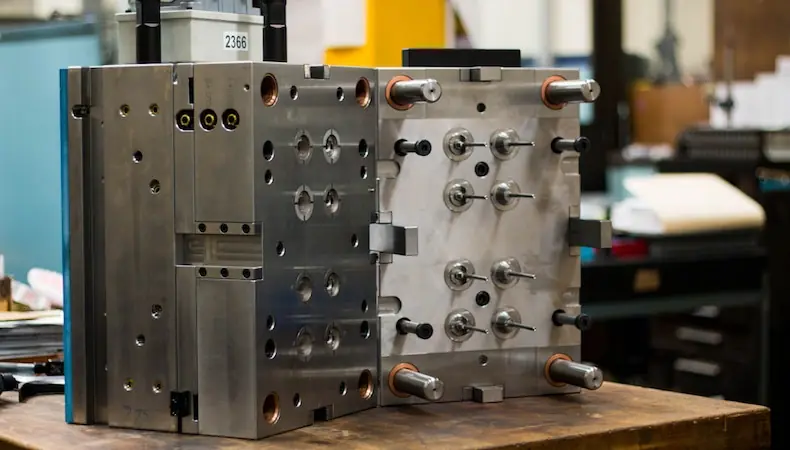Injection Molding is one of the more common manufacturing techniques used to produce parts by injecting molten material into a mold. In order to develop complex parts that will work as intended, designers and engineers strive to manufacture products with tight tolerances.
Today, we discuss some of the ways to achieve tighter tolerances in injection molding. To begin, it is imperative that you have control of your tolerances right from the design stage. This will help everyone involved in the process and help to set realistic expectations when evaluating design specifications.
What are the benefits of having parts with tight tolerances?
Tight tolerance is a commonly used term in the manufacturing industry. It generally refers to injection molding parts with tolerances of 0.002 inches +/-. Parts with tighter tolerances will perform optimally when designed properly. These parts are also less expensive to produce (cost-effective) and less likely to need secondary operations like machining. The part and process complexity, material, tooling, design and implementation are all factors that impact tight tolerance in a production part.
How to get tighter tolerances for your production parts
Start with your design
In manufacturing, the design controls the output. This is why it is crucial to identify tight tolerances right from this phase of product development. You must factor in key parameters such as the complexity and geometry of the part, the thickness of its wall and the overall size of the part. Generally, the bigger the part size, the harder it is to hold tight tolerances.
Use the DFM approach
The complexity of the product is another major factor to be monitored when looking to get tighter tolerances. This is why product designers and engineers are encouraged to work together and take a design for manufacture (DFM) approach.
When a DFM approach is taken, common issues such as warpage, shrinkage, heating and cooling temperatures and even the ability of the molten material to fill the cavities quickly enough will be considered and factored into the design. A DFM approach also helps to manage the tool design and material flow and allows some level of process optimization
Consider the application enviroment
When designing your product part, ensure that your designers have a clear and detailed knowledge of the application environment. This is because the environment will influence the behavior of the material and consquently, its tolerance. Plastics typically expand under high thermal conditions. What this means is that the parts will have to bedesigned with considerations for these thermal expansions and the effects that it could have on ability of such part to maintain its tolerance. If the tight-tolerance part will have exposure to high or low temperatures during the normal operation of the part, you will need to consider how it expands or contracts. This information will help to guide the design to understand where and when tight tolerances may not be necessary.
Consider the Material being used
The material to be used is another decision that must be concluded early enough in the injection molding process. It would interest you to know that different resins will give different tolerances for exactly the same design and physcial part.
The physcial properties of the material to be used will also affect factors like shrinking as resins tend to have different shrink rates. The type of the fillers and the nature of the resin (crystalline or amophous) will also play a crucial part in determining the tolerance.
Tooling and Process Considerations
The material from which the tool is made, its design and cavitation will all affect the tolerance of the final part. Tight tolerances can be distorted by the need to heat or cool the tool and the number of cavities in the mold.
Other important tooling considerations that may affect the tolerance of the final part may include the steel grade, the gate types, waterline locations, flow parameters, cooling time and pressure.
Premium Part Polyethylene Injection Molding Services
Take advantage of our professional injection molding services and produce superior parts with tighter tolerances that match your specification and production needs. Our injection molded parts are hand-vetted and built to last. Our process is optimized to help all our customers reap all the benefits of producing parts with tighter tolerances including cost saving, dimensional stability and end-use functionality.
FirstPart Premium Polyethylene Injection Molding Services
Take advantage of our professional injection molding services and produce superior parts with tighter tolerances that match your specification and production needs. Our injection molded parts are hand-vetted and built to last. Our process is optimized to help all our customers reap all the benefits of producing parts with tighter tolerances including cost saving, dimensional stability and end-use functionality.










